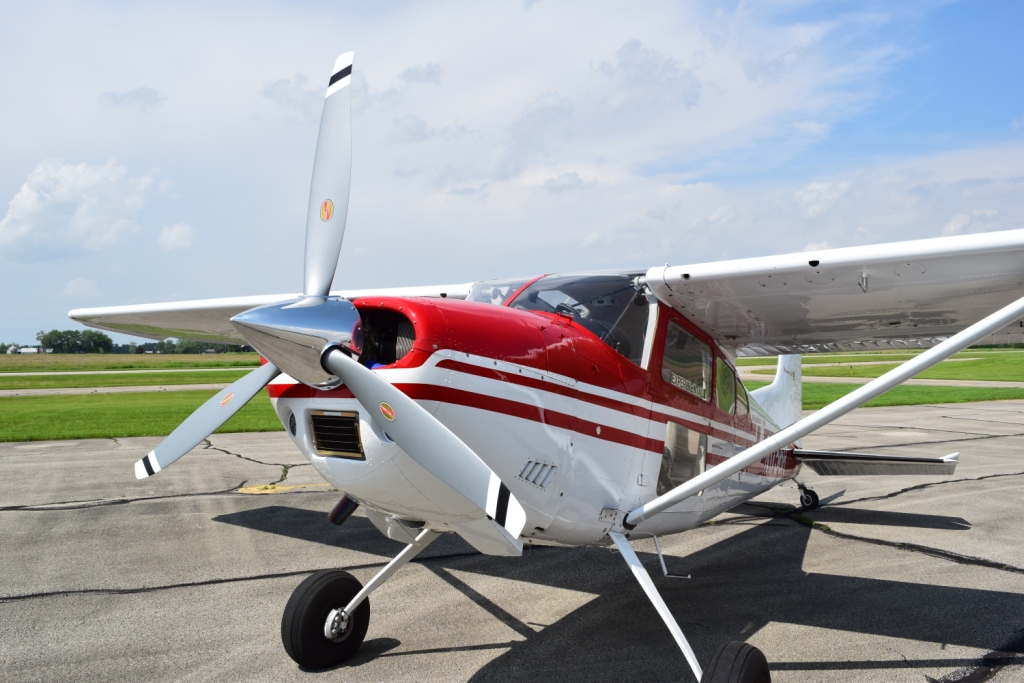
Understanding the weight and balance limits of your aircraft is critical to flight safety. Exceeding an aircraft’s maximum weight limitations may damage the structure of the aircraft and lead to stability and performance issues. When considering weight and balance, pilots need to know more than how much an aircraft can carry; they should also calculate the proper distribution of that weight to balance the load.
Too much weight distributed too far forward in an aircraft may create a nose-heavy effect, while too much weight too far aft will cause a tail-heavy condition. For safe and stable flight, the onboard load needs to be in balance throughout the aircraft, similarly to how a playground see-saw needs to have equal weight on both ends to stay level. Before every flight, pilots must determine both the weight and balance to ensure the aircraft is within its specified limits.
To understand weight and balance calculations, be sure you’re familiar with these terms:
Center of gravity (CG) is the mass center of the aircraft. If the aircraft were to be suspended from above by a wire, this is the point where it would balance perfectly. The CG must be located within specific limits for safe flight. CG is usually expressed in inches from a reference datum.
Datum (reference datum) is an imaginary vertical plane or line from which all measurements of arm are taken. The datum is established by the manufacturer and stated in the Airplane Flight Manual (AFM) or Pilot’s Operating Handbook (POH).
Arm (moment arm) is the horizontal distance in inches from the reference datum line to the CG of an item. The algebraic sign is plus (+) if measured aft of the datum and minus (–) if measured forward of the datum.
Moment is a force that causes an object to rotate. It is the product of the weight of an item multiplied by its arm and is measured in pound-inches (in-lb).
CG limits are the specified forward and aft points within which the CG must be located during flight. These limitations are determined by the aircraft manufacturer and are specified in the AFM/POH.
CG range is the distance between the forward and aft CG limits indicated on pertinent aircraft specifications.
Basic empty weight refers to the standard empty weight of the aircraft plus the weight of any optional and special equipment installed on the aircraft.
Fuel load includes only usable fuel, not the fuel required to fill the lines or the fuel that’s trapped in the tank sumps.
Useful load is total usable fuel, cargo, pilot, passengers, and drainable oil. To find this number, subtract the basic empty weight from the maximum allowable takeoff weight.
Payload refers to how much weight the aircraft can carry in addition to basic empty weight and fuel. This includes all occupants, bags, and cargo.
There are several ways to calculate aircraft weight and balance, including using graphs, tables, and simple math. Here’s how to use the computational method to run the numbers:
1. Refer to the AFM/POH of your aircraft to find the basic empty weight of the aircraft. Then, list the weights of occupants, baggage, cargo, and fuel.
2. Find the moment for each weight listed by multiplying each weight by the arm (the horizontal distance from the reference datum).
3. Add all the weights together to find the gross weight. Then, add all the moments to find the total moment.
4. Find the center of gravity by dividing the total moment by the gross weight.
5. Now that you know the total weight and center of gravity, refer to the center of gravity limits chart in the AFM/POH to determine if you’re within the allowable limits.
For more information on the basic principles of weight and balance calculation, refer to the FAA’s weight and balance handbook.